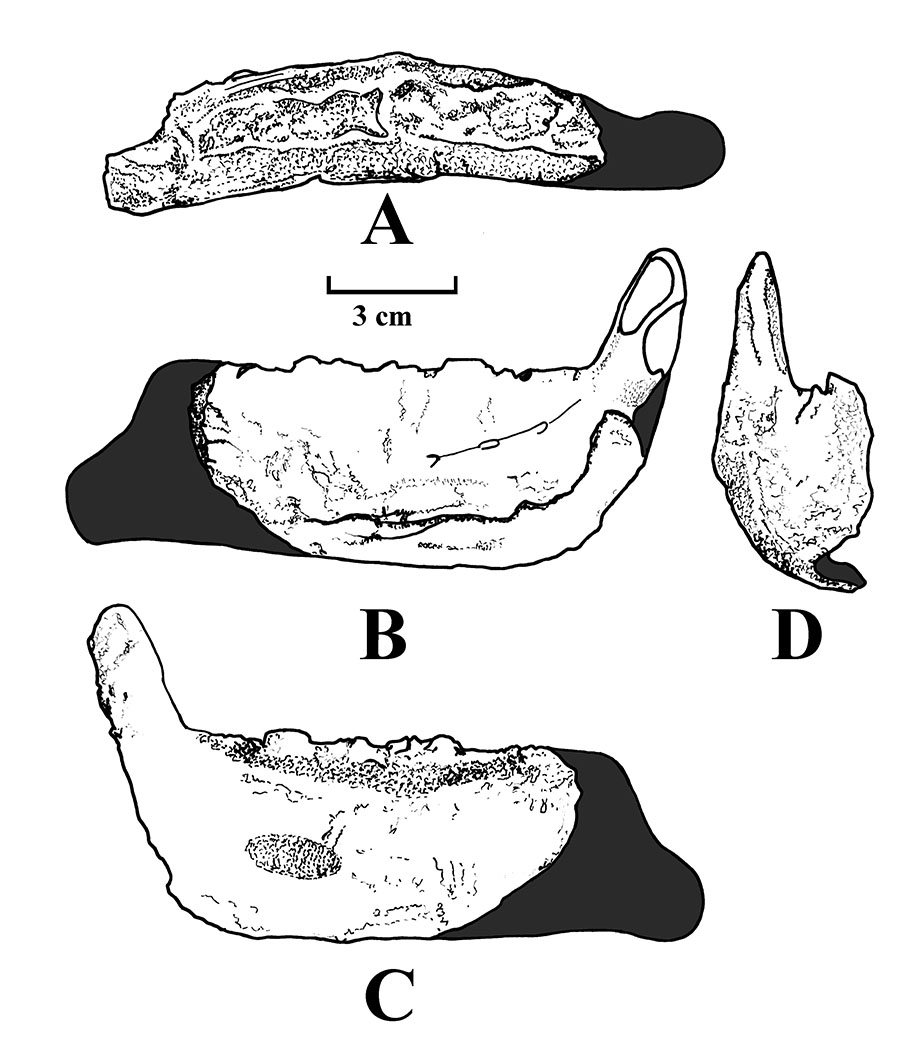
Genus: Obelignathus CZEPINSKI & MADZIA, 2025
Etymology: A combination of Obelix, the name of a cartoon character in the French comic book series Asterix, or Asterix and Obelix, by Rene Goscinny and Albert Uderzo, known for his exceptional strength, as a reference to teh unusuallly robustly-built holotype dentary and Greek, gnathos, "jaw": Rod tooth.
Species: septimanicus (BUFFETAUT & LE LEOUFF, 1991) CZEPINSKI & MADZIA, 2025
= Rhabdodon septimanicus BUFFETAUT & LE LEOUFF, 1991
Etymology: From Septimania, a province of the Visigoth kingdom corresponding
to present-day Languedoc, where Montouliers is, Herault Department, France.
Holotype: MDE D30 (old Collection of the Laboratoire de Paleontologie des Vertebres, Universite Paris-VI, no. MTL02)
Locality: Montouliers, Saint-Chinian commune, Herault Department, France.
Horizon: "Gres a Reptilies" Formation.
Biostratigraphy:
Age: Upper Campanian to Lower Maastrichtian Stage, Senonian Subepoch, Gulf Epoch, Late Cretaceous.
Material: Fragmentary right dentary.

Obelignathus septimanicus Holotype MDE D30 right dentary after CZEPINSKI & MADZIA, 2025: A) dorsal, B) left lateral, C) right lateral and D) medial views.
Referred material:
BUFFETAUT, LE LOEUFF, TONG, DUFFAUD, CAVIN, GARCIA, & WARD, 1999
Locality: Massecaps, near Cruzy, Herault Department, Southern France.
Horizon:
Biostratigraphy:
Age: Probably early Maastrichtian Stage, Upper Senonian Subepoch, Upper Malm Epoch, Late Cretaceous.
Material:
Number: Not given: Vertebrae, pelvic elements, limb bones, teeth, a well preserved dentary and a braincase.